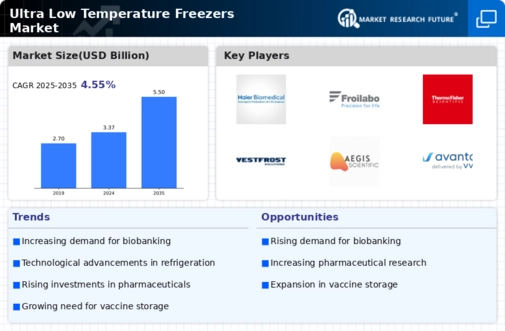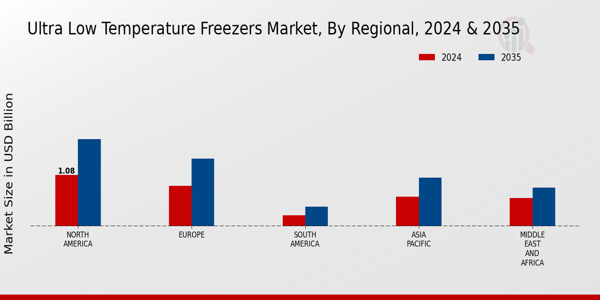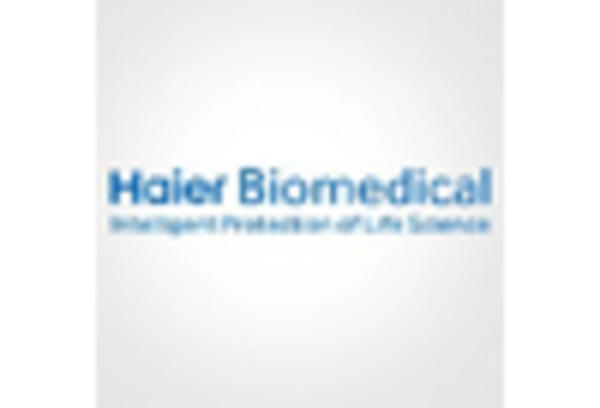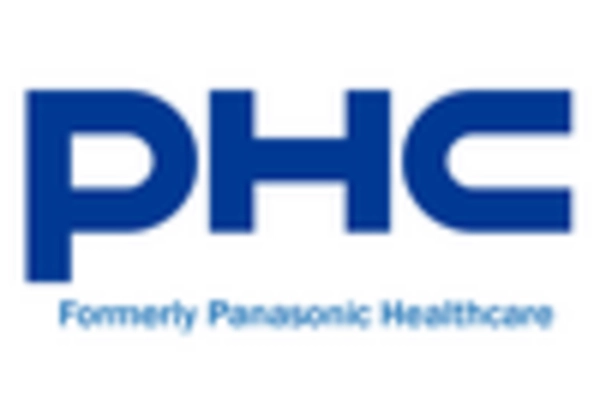-
EXECUTIVE SUMMARY
-
Market Overview
-
Key Findings
-
Market Segmentation
-
Competitive Landscape
-
Challenges and Opportunities
-
1.6.
-
Future Outlook
-
\r\n
-
MARKET INTRODUCTION
-
Definition
-
Scope of the study
- Research Objective
- Assumption
- Limitations
-
RESEARCH METHODOLOGY
-
Overview
-
3.2.
-
Data Mining
-
Secondary Research
-
Primary Research
- Breakdown of Primary
-
3.4.1.
-
Primary Interviews and Information Gathering Process
-
Respondents
-
Forecasting Model
-
Market Size Estimation
- Top-Down Approach
-
3.6.1.
-
Bottom-Up Approach
-
Data Triangulation
-
Validation
-
\r\n
-
MARKET DYNAMICS
-
Overview
-
Drivers
-
Restraints
-
Opportunities
-
MARKET
-
FACTOR ANALYSIS
-
Value chain Analysis
-
Porter's Five Forces
- Bargaining Power of Suppliers
- Bargaining Power
- Threat of New Entrants
- Threat of Substitutes
- Intensity of Rivalry
-
Analysis
-
of Buyers
-
COVID-19 Impact Analysis
- Regional Impact
- Opportunity and
-
5.3.1.
-
Market Impact Analysis
-
Threat Analysis
-
\r\n
-
ULTRA LOW TEMPERATURE FREEZERS MARKET,
-
BY APPLICATION (USD BILLION)
-
Biobanking
-
Pharmaceuticals
-
Research Laboratories
-
Clinical Trials
-
Industrial Applications
-
ULTRA LOW TEMPERATURE FREEZERS MARKET, BY END USE (USD BILLION)
-
7.1.
-
Healthcare
-
Academic Institutions
-
Pharmaceutical Companies
-
Biotechnology Companies
-
ULTRA LOW TEMPERATURE FREEZERS MARKET,
-
BY PRODUCT TYPE (USD BILLION)
-
Upright Freezers
-
Chest Freezers
-
Combination Freezers
-
Portable Freezers
-
ULTRA LOW
-
TEMPERATURE FREEZERS MARKET, BY COOLING TECHNOLOGY (USD BILLION)
-
Vapor
-
Compression
-
Cascade Refrigeration
-
Cryogenic
-
ULTRA
-
LOW TEMPERATURE FREEZERS MARKET, BY REGIONAL (USD BILLION)
-
North America
- US
- Canada
-
Europe
- Germany
- UK
- France
- Russia
- Italy
- Rest of Europe
-
10.2.6.
-
Spain
-
APAC
- China
- Japan
- South Korea
- Malaysia
- Indonesia
- Rest of APAC
-
10.3.2.
-
India
-
10.3.6.
-
Thailand
-
South America
- Brazil
- Mexico
- Argentina
-
10.4.4.
-
Rest of South America
-
MEA
- GCC Countries
- Rest of MEA
-
10.5.2.
-
South Africa
-
\r\n
-
COMPETITIVE LANDSCAPE
-
Overview
-
Competitive Analysis
-
Market share Analysis
-
Major Growth Strategy in the Ultra Low Temperature Freezers Market
-
Competitive Benchmarking
-
Leading Players in Terms of Number
-
of Developments in the Ultra Low Temperature Freezers Market
-
Key developments
- New Product Launch/Service Deployment
- Joint Ventures
-
and growth strategies
-
11.7.2.
-
Merger & Acquisitions
-
Major Players
- Sales and Operating Income
- Major Players
-
Financial Matrix
-
R&D Expenditure. 2023
-
COMPANY PROFILES
-
Haier Biomedical
- Financial Overview
- Products Offered
- Key
- SWOT Analysis
- Key Strategies
- Financial Overview
- Products Offered
- SWOT Analysis
- Key Strategies
- Financial Overview
- Products
- Key Developments
- SWOT Analysis
-
Developments
-
12.2.
-
Froilabo
-
12.2.3.
-
Key Developments
-
12.3.
-
Thermo Fisher Scientific
-
Offered
-
12.3.5.
-
Key Strategies
-
Vestfrost Solutions
- Financial Overview
- Products Offered
- Key Developments
- SWOT
- Key Strategies
-
Analysis
-
BD
- Financial Overview
- Products Offered
- Key Developments
- SWOT
- Key Strategies
-
Analysis
-
Arctiko
- Financial
- Products Offered
- Key Developments
- Key Strategies
-
Overview
-
12.6.4.
-
SWOT Analysis
-
Priorclave
- Products Offered
- Key Developments
- SWOT Analysis
- Key Strategies
-
12.7.1.
-
Financial Overview
-
Philips
- Financial Overview
- Products Offered
- Key Developments
- SWOT Analysis
- Key Strategies
-
Aegis Scientific
- Financial Overview
- Products Offered
- Key
- SWOT Analysis
- Key Strategies
- Financial Overview
- Products Offered
- SWOT Analysis
- Key Strategies
-
Developments
-
12.10.
-
Miele
-
12.10.3.
-
Key Developments
-
Sanyo
- Financial Overview
- Products Offered
- Key Developments
- SWOT Analysis
- Key
-
Strategies
-
VWR
- Financial Overview
- Products
- Key Developments
- SWOT Analysis
-
Offered
-
12.12.5.
-
Key Strategies
-
Labcold
- Financial Overview
- Key Developments
- SWOT Analysis
- Key Strategies
-
12.13.2.
-
Products Offered
-
Eppendorf
- Financial Overview
- Products Offered
- Key Developments
- SWOT
- Key Strategies
-
Analysis
-
Panasonic
- Financial
- Products Offered
- Key Developments
- Key Strategies
-
Overview
-
12.15.4.
-
SWOT Analysis
-
APPENDIX
-
References
-
Related Reports
-
\r\n
-
LIST OF TABLES
-
\r\nTABLE
-
LIST OF ASSUMPTIONS
-
NORTH AMERICA ULTRA LOW TEMPERATURE FREEZERS
-
MARKET SIZE ESTIMATES & FORECAST, BY APPLICATION, 2019-2035 (USD BILLIONS)
-
NORTH AMERICA ULTRA LOW TEMPERATURE FREEZERS MARKET SIZE ESTIMATES &
-
FORECAST, BY END USE, 2019-2035 (USD BILLIONS)
-
NORTH AMERICA ULTRA
-
LOW TEMPERATURE FREEZERS MARKET SIZE ESTIMATES & FORECAST, BY PRODUCT TYPE,
-
NORTH AMERICA ULTRA LOW TEMPERATURE FREEZERS
-
MARKET SIZE ESTIMATES & FORECAST, BY COOLING TECHNOLOGY, 2019-2035 (USD BILLIONS)
-
NORTH AMERICA ULTRA LOW TEMPERATURE FREEZERS MARKET SIZE ESTIMATES
-
& FORECAST, BY REGIONAL, 2019-2035 (USD BILLIONS)
-
US ULTRA LOW
-
TEMPERATURE FREEZERS MARKET SIZE ESTIMATES & FORECAST, BY APPLICATION, 2019-2035
-
(USD BILLIONS)
-
US ULTRA LOW TEMPERATURE FREEZERS MARKET SIZE ESTIMATES
-
& FORECAST, BY END USE, 2019-2035 (USD BILLIONS)
-
US ULTRA LOW
-
TEMPERATURE FREEZERS MARKET SIZE ESTIMATES & FORECAST, BY PRODUCT TYPE, 2019-2035
-
(USD BILLIONS)
-
US ULTRA LOW TEMPERATURE FREEZERS MARKET SIZE ESTIMATES
-
& FORECAST, BY COOLING TECHNOLOGY, 2019-2035 (USD BILLIONS)
-
TABLE 11.
-
US ULTRA LOW TEMPERATURE FREEZERS MARKET SIZE ESTIMATES & FORECAST, BY REGIONAL,
-
CANADA ULTRA LOW TEMPERATURE FREEZERS MARKET
-
SIZE ESTIMATES & FORECAST, BY APPLICATION, 2019-2035 (USD BILLIONS)
-
TABLE
-
CANADA ULTRA LOW TEMPERATURE FREEZERS MARKET SIZE ESTIMATES & FORECAST,
-
BY END USE, 2019-2035 (USD BILLIONS)
-
CANADA ULTRA LOW TEMPERATURE
-
FREEZERS MARKET SIZE ESTIMATES & FORECAST, BY PRODUCT TYPE, 2019-2035 (USD BILLIONS)
-
CANADA ULTRA LOW TEMPERATURE FREEZERS MARKET SIZE ESTIMATES &
-
FORECAST, BY COOLING TECHNOLOGY, 2019-2035 (USD BILLIONS)
-
CANADA
-
ULTRA LOW TEMPERATURE FREEZERS MARKET SIZE ESTIMATES & FORECAST, BY REGIONAL,
-
EUROPE ULTRA LOW TEMPERATURE FREEZERS MARKET
-
SIZE ESTIMATES & FORECAST, BY APPLICATION, 2019-2035 (USD BILLIONS)
-
TABLE
-
EUROPE ULTRA LOW TEMPERATURE FREEZERS MARKET SIZE ESTIMATES & FORECAST,
-
BY END USE, 2019-2035 (USD BILLIONS)
-
EUROPE ULTRA LOW TEMPERATURE
-
FREEZERS MARKET SIZE ESTIMATES & FORECAST, BY PRODUCT TYPE, 2019-2035 (USD BILLIONS)
-
EUROPE ULTRA LOW TEMPERATURE FREEZERS MARKET SIZE ESTIMATES &
-
FORECAST, BY COOLING TECHNOLOGY, 2019-2035 (USD BILLIONS)
-
EUROPE
-
ULTRA LOW TEMPERATURE FREEZERS MARKET SIZE ESTIMATES & FORECAST, BY REGIONAL,
-
GERMANY ULTRA LOW TEMPERATURE FREEZERS
-
MARKET SIZE ESTIMATES & FORECAST, BY APPLICATION, 2019-2035 (USD BILLIONS)
-
GERMANY ULTRA LOW TEMPERATURE FREEZERS MARKET SIZE ESTIMATES & FORECAST,
-
BY END USE, 2019-2035 (USD BILLIONS)
-
GERMANY ULTRA LOW TEMPERATURE
-
FREEZERS MARKET SIZE ESTIMATES & FORECAST, BY PRODUCT TYPE, 2019-2035 (USD BILLIONS)
-
GERMANY ULTRA LOW TEMPERATURE FREEZERS MARKET SIZE ESTIMATES &
-
FORECAST, BY COOLING TECHNOLOGY, 2019-2035 (USD BILLIONS)
-
GERMANY
-
ULTRA LOW TEMPERATURE FREEZERS MARKET SIZE ESTIMATES & FORECAST, BY REGIONAL,
-
UK ULTRA LOW TEMPERATURE FREEZERS MARKET
-
SIZE ESTIMATES & FORECAST, BY APPLICATION, 2019-2035 (USD BILLIONS)
-
TABLE
-
UK ULTRA LOW TEMPERATURE FREEZERS MARKET SIZE ESTIMATES & FORECAST, BY END
-
USE, 2019-2035 (USD BILLIONS)
-
UK ULTRA LOW TEMPERATURE FREEZERS
-
MARKET SIZE ESTIMATES & FORECAST, BY PRODUCT TYPE, 2019-2035 (USD BILLIONS)
-
UK ULTRA LOW TEMPERATURE FREEZERS MARKET SIZE ESTIMATES & FORECAST,
-
BY COOLING TECHNOLOGY, 2019-2035 (USD BILLIONS)
-
UK ULTRA LOW TEMPERATURE
-
FREEZERS MARKET SIZE ESTIMATES & FORECAST, BY REGIONAL, 2019-2035 (USD BILLIONS)
-
FRANCE ULTRA LOW TEMPERATURE FREEZERS MARKET SIZE ESTIMATES &
-
FORECAST, BY APPLICATION, 2019-2035 (USD BILLIONS)
-
FRANCE ULTRA
-
LOW TEMPERATURE FREEZERS MARKET SIZE ESTIMATES & FORECAST, BY END USE, 2019-2035
-
(USD BILLIONS)
-
FRANCE ULTRA LOW TEMPERATURE FREEZERS MARKET SIZE
-
ESTIMATES & FORECAST, BY PRODUCT TYPE, 2019-2035 (USD BILLIONS)
-
TABLE
-
FRANCE ULTRA LOW TEMPERATURE FREEZERS MARKET SIZE ESTIMATES & FORECAST,
-
BY COOLING TECHNOLOGY, 2019-2035 (USD BILLIONS)
-
FRANCE ULTRA LOW
-
TEMPERATURE FREEZERS MARKET SIZE ESTIMATES & FORECAST, BY REGIONAL, 2019-2035
-
(USD BILLIONS)
-
RUSSIA ULTRA LOW TEMPERATURE FREEZERS MARKET SIZE
-
ESTIMATES & FORECAST, BY APPLICATION, 2019-2035 (USD BILLIONS)
-
TABLE 38.
-
RUSSIA ULTRA LOW TEMPERATURE FREEZERS MARKET SIZE ESTIMATES & FORECAST, BY END
-
USE, 2019-2035 (USD BILLIONS)
-
RUSSIA ULTRA LOW TEMPERATURE FREEZERS
-
MARKET SIZE ESTIMATES & FORECAST, BY PRODUCT TYPE, 2019-2035 (USD BILLIONS)
-
RUSSIA ULTRA LOW TEMPERATURE FREEZERS MARKET SIZE ESTIMATES &
-
FORECAST, BY COOLING TECHNOLOGY, 2019-2035 (USD BILLIONS)
-
RUSSIA
-
ULTRA LOW TEMPERATURE FREEZERS MARKET SIZE ESTIMATES & FORECAST, BY REGIONAL,
-
ITALY ULTRA LOW TEMPERATURE FREEZERS MARKET
-
SIZE ESTIMATES & FORECAST, BY APPLICATION, 2019-2035 (USD BILLIONS)
-
TABLE
-
ITALY ULTRA LOW TEMPERATURE FREEZERS MARKET SIZE ESTIMATES & FORECAST, BY
-
END USE, 2019-2035 (USD BILLIONS)
-
ITALY ULTRA LOW TEMPERATURE FREEZERS
-
MARKET SIZE ESTIMATES & FORECAST, BY PRODUCT TYPE, 2019-2035 (USD BILLIONS)
-
ITALY ULTRA LOW TEMPERATURE FREEZERS MARKET SIZE ESTIMATES &
-
FORECAST, BY COOLING TECHNOLOGY, 2019-2035 (USD BILLIONS)
-
ITALY
-
ULTRA LOW TEMPERATURE FREEZERS MARKET SIZE ESTIMATES & FORECAST, BY REGIONAL,
-
SPAIN ULTRA LOW TEMPERATURE FREEZERS MARKET
-
SIZE ESTIMATES & FORECAST, BY APPLICATION, 2019-2035 (USD BILLIONS)
-
TABLE
-
SPAIN ULTRA LOW TEMPERATURE FREEZERS MARKET SIZE ESTIMATES & FORECAST, BY
-
END USE, 2019-2035 (USD BILLIONS)
-
SPAIN ULTRA LOW TEMPERATURE FREEZERS
-
MARKET SIZE ESTIMATES & FORECAST, BY PRODUCT TYPE, 2019-2035 (USD BILLIONS)
-
SPAIN ULTRA LOW TEMPERATURE FREEZERS MARKET SIZE ESTIMATES &
-
FORECAST, BY COOLING TECHNOLOGY, 2019-2035 (USD BILLIONS)
-
SPAIN
-
ULTRA LOW TEMPERATURE FREEZERS MARKET SIZE ESTIMATES & FORECAST, BY REGIONAL,
-
REST OF EUROPE ULTRA LOW TEMPERATURE FREEZERS
-
MARKET SIZE ESTIMATES & FORECAST, BY APPLICATION, 2019-2035 (USD BILLIONS)
-
REST OF EUROPE ULTRA LOW TEMPERATURE FREEZERS MARKET SIZE ESTIMATES
-
& FORECAST, BY END USE, 2019-2035 (USD BILLIONS)
-
REST OF EUROPE
-
ULTRA LOW TEMPERATURE FREEZERS MARKET SIZE ESTIMATES & FORECAST, BY PRODUCT
-
TYPE, 2019-2035 (USD BILLIONS)
-
REST OF EUROPE ULTRA LOW TEMPERATURE
-
FREEZERS MARKET SIZE ESTIMATES & FORECAST, BY COOLING TECHNOLOGY, 2019-2035
-
(USD BILLIONS)
-
REST OF EUROPE ULTRA LOW TEMPERATURE FREEZERS MARKET
-
SIZE ESTIMATES & FORECAST, BY REGIONAL, 2019-2035 (USD BILLIONS)
-
TABLE
-
APAC ULTRA LOW TEMPERATURE FREEZERS MARKET SIZE ESTIMATES & FORECAST, BY
-
APPLICATION, 2019-2035 (USD BILLIONS)
-
APAC ULTRA LOW TEMPERATURE
-
FREEZERS MARKET SIZE ESTIMATES & FORECAST, BY END USE, 2019-2035 (USD BILLIONS)
-
APAC ULTRA LOW TEMPERATURE FREEZERS MARKET SIZE ESTIMATES &
-
FORECAST, BY PRODUCT TYPE, 2019-2035 (USD BILLIONS)
-
APAC ULTRA LOW
-
TEMPERATURE FREEZERS MARKET SIZE ESTIMATES & FORECAST, BY COOLING TECHNOLOGY,
-
APAC ULTRA LOW TEMPERATURE FREEZERS MARKET
-
SIZE ESTIMATES & FORECAST, BY REGIONAL, 2019-2035 (USD BILLIONS)
-
TABLE
-
CHINA ULTRA LOW TEMPERATURE FREEZERS MARKET SIZE ESTIMATES & FORECAST, BY
-
APPLICATION, 2019-2035 (USD BILLIONS)
-
CHINA ULTRA LOW TEMPERATURE
-
FREEZERS MARKET SIZE ESTIMATES & FORECAST, BY END USE, 2019-2035 (USD BILLIONS)
-
CHINA ULTRA LOW TEMPERATURE FREEZERS MARKET SIZE ESTIMATES &
-
FORECAST, BY PRODUCT TYPE, 2019-2035 (USD BILLIONS)
-
CHINA ULTRA
-
LOW TEMPERATURE FREEZERS MARKET SIZE ESTIMATES & FORECAST, BY COOLING TECHNOLOGY,
-
CHINA ULTRA LOW TEMPERATURE FREEZERS MARKET
-
SIZE ESTIMATES & FORECAST, BY REGIONAL, 2019-2035 (USD BILLIONS)
-
TABLE
-
INDIA ULTRA LOW TEMPERATURE FREEZERS MARKET SIZE ESTIMATES & FORECAST, BY
-
APPLICATION, 2019-2035 (USD BILLIONS)
-
INDIA ULTRA LOW TEMPERATURE
-
FREEZERS MARKET SIZE ESTIMATES & FORECAST, BY END USE, 2019-2035 (USD BILLIONS)
-
INDIA ULTRA LOW TEMPERATURE FREEZERS MARKET SIZE ESTIMATES &
-
FORECAST, BY PRODUCT TYPE, 2019-2035 (USD BILLIONS)
-
INDIA ULTRA
-
LOW TEMPERATURE FREEZERS MARKET SIZE ESTIMATES & FORECAST, BY COOLING TECHNOLOGY,
-
INDIA ULTRA LOW TEMPERATURE FREEZERS MARKET
-
SIZE ESTIMATES & FORECAST, BY REGIONAL, 2019-2035 (USD BILLIONS)
-
TABLE
-
JAPAN ULTRA LOW TEMPERATURE FREEZERS MARKET SIZE ESTIMATES & FORECAST, BY
-
APPLICATION, 2019-2035 (USD BILLIONS)
-
JAPAN ULTRA LOW TEMPERATURE
-
FREEZERS MARKET SIZE ESTIMATES & FORECAST, BY END USE, 2019-2035 (USD BILLIONS)
-
JAPAN ULTRA LOW TEMPERATURE FREEZERS MARKET SIZE ESTIMATES &
-
FORECAST, BY PRODUCT TYPE, 2019-2035 (USD BILLIONS)
-
JAPAN ULTRA
-
LOW TEMPERATURE FREEZERS MARKET SIZE ESTIMATES & FORECAST, BY COOLING TECHNOLOGY,
-
JAPAN ULTRA LOW TEMPERATURE FREEZERS MARKET
-
SIZE ESTIMATES & FORECAST, BY REGIONAL, 2019-2035 (USD BILLIONS)
-
TABLE
-
SOUTH KOREA ULTRA LOW TEMPERATURE FREEZERS MARKET SIZE ESTIMATES & FORECAST,
-
BY APPLICATION, 2019-2035 (USD BILLIONS)
-
SOUTH KOREA ULTRA LOW TEMPERATURE
-
FREEZERS MARKET SIZE ESTIMATES & FORECAST, BY END USE, 2019-2035 (USD BILLIONS)
-
SOUTH KOREA ULTRA LOW TEMPERATURE FREEZERS MARKET SIZE ESTIMATES
-
& FORECAST, BY PRODUCT TYPE, 2019-2035 (USD BILLIONS)
-
SOUTH
-
KOREA ULTRA LOW TEMPERATURE FREEZERS MARKET SIZE ESTIMATES & FORECAST, BY COOLING
-
TECHNOLOGY, 2019-2035 (USD BILLIONS)
-
SOUTH KOREA ULTRA LOW TEMPERATURE
-
FREEZERS MARKET SIZE ESTIMATES & FORECAST, BY REGIONAL, 2019-2035 (USD BILLIONS)
-
MALAYSIA ULTRA LOW TEMPERATURE FREEZERS MARKET SIZE ESTIMATES &
-
FORECAST, BY APPLICATION, 2019-2035 (USD BILLIONS)
-
MALAYSIA ULTRA
-
LOW TEMPERATURE FREEZERS MARKET SIZE ESTIMATES & FORECAST, BY END USE, 2019-2035
-
(USD BILLIONS)
-
MALAYSIA ULTRA LOW TEMPERATURE FREEZERS MARKET SIZE
-
ESTIMATES & FORECAST, BY PRODUCT TYPE, 2019-2035 (USD BILLIONS)
-
TABLE
-
MALAYSIA ULTRA LOW TEMPERATURE FREEZERS MARKET SIZE ESTIMATES & FORECAST,
-
BY COOLING TECHNOLOGY, 2019-2035 (USD BILLIONS)
-
MALAYSIA ULTRA LOW
-
TEMPERATURE FREEZERS MARKET SIZE ESTIMATES & FORECAST, BY REGIONAL, 2019-2035
-
(USD BILLIONS)
-
THAILAND ULTRA LOW TEMPERATURE FREEZERS MARKET SIZE
-
ESTIMATES & FORECAST, BY APPLICATION, 2019-2035 (USD BILLIONS)
-
TABLE 88.
-
THAILAND ULTRA LOW TEMPERATURE FREEZERS MARKET SIZE ESTIMATES & FORECAST, BY
-
END USE, 2019-2035 (USD BILLIONS)
-
THAILAND ULTRA LOW TEMPERATURE
-
FREEZERS MARKET SIZE ESTIMATES & FORECAST, BY PRODUCT TYPE, 2019-2035 (USD BILLIONS)
-
THAILAND ULTRA LOW TEMPERATURE FREEZERS MARKET SIZE ESTIMATES &
-
FORECAST, BY COOLING TECHNOLOGY, 2019-2035 (USD BILLIONS)
-
THAILAND
-
ULTRA LOW TEMPERATURE FREEZERS MARKET SIZE ESTIMATES & FORECAST, BY REGIONAL,
-
INDONESIA ULTRA LOW TEMPERATURE FREEZERS
-
MARKET SIZE ESTIMATES & FORECAST, BY APPLICATION, 2019-2035 (USD BILLIONS)
-
INDONESIA ULTRA LOW TEMPERATURE FREEZERS MARKET SIZE ESTIMATES &
-
FORECAST, BY END USE, 2019-2035 (USD BILLIONS)
-
INDONESIA ULTRA LOW
-
TEMPERATURE FREEZERS MARKET SIZE ESTIMATES & FORECAST, BY PRODUCT TYPE, 2019-2035
-
(USD BILLIONS)
-
INDONESIA ULTRA LOW TEMPERATURE FREEZERS MARKET SIZE
-
ESTIMATES & FORECAST, BY COOLING TECHNOLOGY, 2019-2035 (USD BILLIONS)
-
TABLE
-
INDONESIA ULTRA LOW TEMPERATURE FREEZERS MARKET SIZE ESTIMATES & FORECAST,
-
BY REGIONAL, 2019-2035 (USD BILLIONS)
-
REST OF APAC ULTRA LOW TEMPERATURE
-
FREEZERS MARKET SIZE ESTIMATES & FORECAST, BY APPLICATION, 2019-2035 (USD BILLIONS)
-
REST OF APAC ULTRA LOW TEMPERATURE FREEZERS MARKET SIZE ESTIMATES
-
& FORECAST, BY END USE, 2019-2035 (USD BILLIONS)
-
REST OF APAC
-
ULTRA LOW TEMPERATURE FREEZERS MARKET SIZE ESTIMATES & FORECAST, BY PRODUCT
-
TYPE, 2019-2035 (USD BILLIONS)
-
REST OF APAC ULTRA LOW TEMPERATURE
-
FREEZERS MARKET SIZE ESTIMATES & FORECAST, BY COOLING TECHNOLOGY, 2019-2035
-
(USD BILLIONS)
-
REST OF APAC ULTRA LOW TEMPERATURE FREEZERS MARKET
-
SIZE ESTIMATES & FORECAST, BY REGIONAL, 2019-2035 (USD BILLIONS)
-
TABLE
-
SOUTH AMERICA ULTRA LOW TEMPERATURE FREEZERS MARKET SIZE ESTIMATES & FORECAST,
-
BY APPLICATION, 2019-2035 (USD BILLIONS)
-
SOUTH AMERICA ULTRA LOW
-
TEMPERATURE FREEZERS MARKET SIZE ESTIMATES & FORECAST, BY END USE, 2019-2035
-
(USD BILLIONS)
-
SOUTH AMERICA ULTRA LOW TEMPERATURE FREEZERS MARKET
-
SIZE ESTIMATES & FORECAST, BY PRODUCT TYPE, 2019-2035 (USD BILLIONS)
-
TABLE
-
SOUTH AMERICA ULTRA LOW TEMPERATURE FREEZERS MARKET SIZE ESTIMATES & FORECAST,
-
BY COOLING TECHNOLOGY, 2019-2035 (USD BILLIONS)
-
SOUTH AMERICA ULTRA
-
LOW TEMPERATURE FREEZERS MARKET SIZE ESTIMATES & FORECAST, BY REGIONAL, 2019-2035
-
(USD BILLIONS)
-
BRAZIL ULTRA LOW TEMPERATURE FREEZERS MARKET SIZE
-
ESTIMATES & FORECAST, BY APPLICATION, 2019-2035 (USD BILLIONS)
-
TABLE 108.
-
BRAZIL ULTRA LOW TEMPERATURE FREEZERS MARKET SIZE ESTIMATES & FORECAST, BY END
-
USE, 2019-2035 (USD BILLIONS)
-
BRAZIL ULTRA LOW TEMPERATURE FREEZERS
-
MARKET SIZE ESTIMATES & FORECAST, BY PRODUCT TYPE, 2019-2035 (USD BILLIONS)
-
BRAZIL ULTRA LOW TEMPERATURE FREEZERS MARKET SIZE ESTIMATES &
-
FORECAST, BY COOLING TECHNOLOGY, 2019-2035 (USD BILLIONS)
-
BRAZIL
-
ULTRA LOW TEMPERATURE FREEZERS MARKET SIZE ESTIMATES & FORECAST, BY REGIONAL,
-
MEXICO ULTRA LOW TEMPERATURE FREEZERS
-
MARKET SIZE ESTIMATES & FORECAST, BY APPLICATION, 2019-2035 (USD BILLIONS)
-
MEXICO ULTRA LOW TEMPERATURE FREEZERS MARKET SIZE ESTIMATES & FORECAST,
-
BY END USE, 2019-2035 (USD BILLIONS)
-
MEXICO ULTRA LOW TEMPERATURE
-
FREEZERS MARKET SIZE ESTIMATES & FORECAST, BY PRODUCT TYPE, 2019-2035 (USD BILLIONS)
-
MEXICO ULTRA LOW TEMPERATURE FREEZERS MARKET SIZE ESTIMATES &
-
FORECAST, BY COOLING TECHNOLOGY, 2019-2035 (USD BILLIONS)
-
MEXICO
-
ULTRA LOW TEMPERATURE FREEZERS MARKET SIZE ESTIMATES & FORECAST, BY REGIONAL,
-
ARGENTINA ULTRA LOW TEMPERATURE FREEZERS
-
MARKET SIZE ESTIMATES & FORECAST, BY APPLICATION, 2019-2035 (USD BILLIONS)
-
ARGENTINA ULTRA LOW TEMPERATURE FREEZERS MARKET SIZE ESTIMATES &
-
FORECAST, BY END USE, 2019-2035 (USD BILLIONS)
-
ARGENTINA ULTRA
-
LOW TEMPERATURE FREEZERS MARKET SIZE ESTIMATES & FORECAST, BY PRODUCT TYPE,
-
ARGENTINA ULTRA LOW TEMPERATURE FREEZERS
-
MARKET SIZE ESTIMATES & FORECAST, BY COOLING TECHNOLOGY, 2019-2035 (USD BILLIONS)
-
ARGENTINA ULTRA LOW TEMPERATURE FREEZERS MARKET SIZE ESTIMATES
-
& FORECAST, BY REGIONAL, 2019-2035 (USD BILLIONS)
-
REST OF SOUTH
-
AMERICA ULTRA LOW TEMPERATURE FREEZERS MARKET SIZE ESTIMATES & FORECAST, BY
-
APPLICATION, 2019-2035 (USD BILLIONS)
-
REST OF SOUTH AMERICA ULTRA
-
LOW TEMPERATURE FREEZERS MARKET SIZE ESTIMATES & FORECAST, BY END USE, 2019-2035
-
(USD BILLIONS)
-
REST OF SOUTH AMERICA ULTRA LOW TEMPERATURE FREEZERS
-
MARKET SIZE ESTIMATES & FORECAST, BY PRODUCT TYPE, 2019-2035 (USD BILLIONS)
-
REST OF SOUTH AMERICA ULTRA LOW TEMPERATURE FREEZERS MARKET SIZE
-
ESTIMATES & FORECAST, BY COOLING TECHNOLOGY, 2019-2035 (USD BILLIONS)
-
TABLE
-
REST OF SOUTH AMERICA ULTRA LOW TEMPERATURE FREEZERS MARKET SIZE ESTIMATES
-
& FORECAST, BY REGIONAL, 2019-2035 (USD BILLIONS)
-
MEA ULTRA
-
LOW TEMPERATURE FREEZERS MARKET SIZE ESTIMATES & FORECAST, BY APPLICATION, 2019-2035
-
(USD BILLIONS)
-
MEA ULTRA LOW TEMPERATURE FREEZERS MARKET SIZE ESTIMATES
-
& FORECAST, BY END USE, 2019-2035 (USD BILLIONS)
-
MEA ULTRA
-
LOW TEMPERATURE FREEZERS MARKET SIZE ESTIMATES & FORECAST, BY PRODUCT TYPE,
-
MEA ULTRA LOW TEMPERATURE FREEZERS MARKET
-
SIZE ESTIMATES & FORECAST, BY COOLING TECHNOLOGY, 2019-2035 (USD BILLIONS)
-
MEA ULTRA LOW TEMPERATURE FREEZERS MARKET SIZE ESTIMATES & FORECAST,
-
BY REGIONAL, 2019-2035 (USD BILLIONS)
-
GCC COUNTRIES ULTRA LOW TEMPERATURE
-
FREEZERS MARKET SIZE ESTIMATES & FORECAST, BY APPLICATION, 2019-2035 (USD BILLIONS)
-
GCC COUNTRIES ULTRA LOW TEMPERATURE FREEZERS MARKET SIZE ESTIMATES
-
& FORECAST, BY END USE, 2019-2035 (USD BILLIONS)
-
GCC COUNTRIES
-
ULTRA LOW TEMPERATURE FREEZERS MARKET SIZE ESTIMATES & FORECAST, BY PRODUCT
-
TYPE, 2019-2035 (USD BILLIONS)
-
GCC COUNTRIES ULTRA LOW TEMPERATURE
-
FREEZERS MARKET SIZE ESTIMATES & FORECAST, BY COOLING TECHNOLOGY, 2019-2035
-
(USD BILLIONS)
-
GCC COUNTRIES ULTRA LOW TEMPERATURE FREEZERS MARKET
-
SIZE ESTIMATES & FORECAST, BY REGIONAL, 2019-2035 (USD BILLIONS)
-
TABLE
-
SOUTH AFRICA ULTRA LOW TEMPERATURE FREEZERS MARKET SIZE ESTIMATES & FORECAST,
-
BY APPLICATION, 2019-2035 (USD BILLIONS)
-
SOUTH AFRICA ULTRA LOW
-
TEMPERATURE FREEZERS MARKET SIZE ESTIMATES & FORECAST, BY END USE, 2019-2035
-
(USD BILLIONS)
-
SOUTH AFRICA ULTRA LOW TEMPERATURE FREEZERS MARKET
-
SIZE ESTIMATES & FORECAST, BY PRODUCT TYPE, 2019-2035 (USD BILLIONS)
-
TABLE
-
SOUTH AFRICA ULTRA LOW TEMPERATURE FREEZERS MARKET SIZE ESTIMATES & FORECAST,
-
BY COOLING TECHNOLOGY, 2019-2035 (USD BILLIONS)
-
SOUTH AFRICA ULTRA
-
LOW TEMPERATURE FREEZERS MARKET SIZE ESTIMATES & FORECAST, BY REGIONAL, 2019-2035
-
(USD BILLIONS)
-
REST OF MEA ULTRA LOW TEMPERATURE FREEZERS MARKET
-
SIZE ESTIMATES & FORECAST, BY APPLICATION, 2019-2035 (USD BILLIONS)
-
TABLE
-
REST OF MEA ULTRA LOW TEMPERATURE FREEZERS MARKET SIZE ESTIMATES & FORECAST,
-
BY END USE, 2019-2035 (USD BILLIONS)
-
REST OF MEA ULTRA LOW TEMPERATURE
-
FREEZERS MARKET SIZE ESTIMATES & FORECAST, BY PRODUCT TYPE, 2019-2035 (USD BILLIONS)
-
REST OF MEA ULTRA LOW TEMPERATURE FREEZERS MARKET SIZE ESTIMATES
-
& FORECAST, BY COOLING TECHNOLOGY, 2019-2035 (USD BILLIONS)
-
TABLE 146.
-
REST OF MEA ULTRA LOW TEMPERATURE FREEZERS MARKET SIZE ESTIMATES & FORECAST,
-
BY REGIONAL, 2019-2035 (USD BILLIONS)
-
PRODUCT LAUNCH/PRODUCT DEVELOPMENT/APPROVAL
-
ACQUISITION/PARTNERSHIP
-
\r\n
-
\r\nLIST
-
OF FIGURES
-
\r\nFIGURE 1. MARKET SYNOPSIS
-
NORTH AMERICA
-
ULTRA LOW TEMPERATURE FREEZERS MARKET ANALYSIS
-
US ULTRA LOW TEMPERATURE
-
FREEZERS MARKET ANALYSIS BY APPLICATION
-
US ULTRA LOW TEMPERATURE
-
FREEZERS MARKET ANALYSIS BY END USE
-
US ULTRA LOW TEMPERATURE FREEZERS
-
MARKET ANALYSIS BY PRODUCT TYPE
-
US ULTRA LOW TEMPERATURE FREEZERS
-
MARKET ANALYSIS BY COOLING TECHNOLOGY
-
US ULTRA LOW TEMPERATURE FREEZERS
-
MARKET ANALYSIS BY REGIONAL
-
CANADA ULTRA LOW TEMPERATURE FREEZERS
-
MARKET ANALYSIS BY APPLICATION
-
CANADA ULTRA LOW TEMPERATURE FREEZERS
-
MARKET ANALYSIS BY END USE
-
CANADA ULTRA LOW TEMPERATURE FREEZERS
-
MARKET ANALYSIS BY PRODUCT TYPE
-
CANADA ULTRA LOW TEMPERATURE FREEZERS
-
MARKET ANALYSIS BY COOLING TECHNOLOGY
-
CANADA ULTRA LOW TEMPERATURE
-
FREEZERS MARKET ANALYSIS BY REGIONAL
-
EUROPE ULTRA LOW TEMPERATURE
-
FREEZERS MARKET ANALYSIS
-
GERMANY ULTRA LOW TEMPERATURE FREEZERS
-
MARKET ANALYSIS BY APPLICATION
-
GERMANY ULTRA LOW TEMPERATURE FREEZERS
-
MARKET ANALYSIS BY END USE
-
GERMANY ULTRA LOW TEMPERATURE FREEZERS
-
MARKET ANALYSIS BY PRODUCT TYPE
-
GERMANY ULTRA LOW TEMPERATURE FREEZERS
-
MARKET ANALYSIS BY COOLING TECHNOLOGY
-
GERMANY ULTRA LOW TEMPERATURE
-
FREEZERS MARKET ANALYSIS BY REGIONAL
-
UK ULTRA LOW TEMPERATURE FREEZERS
-
MARKET ANALYSIS BY APPLICATION
-
UK ULTRA LOW TEMPERATURE FREEZERS
-
MARKET ANALYSIS BY END USE
-
UK ULTRA LOW TEMPERATURE FREEZERS MARKET
-
ANALYSIS BY PRODUCT TYPE
-
UK ULTRA LOW TEMPERATURE FREEZERS MARKET
-
ANALYSIS BY COOLING TECHNOLOGY
-
UK ULTRA LOW TEMPERATURE FREEZERS
-
MARKET ANALYSIS BY REGIONAL
-
FRANCE ULTRA LOW TEMPERATURE FREEZERS
-
MARKET ANALYSIS BY APPLICATION
-
FRANCE ULTRA LOW TEMPERATURE FREEZERS
-
MARKET ANALYSIS BY END USE
-
FRANCE ULTRA LOW TEMPERATURE FREEZERS
-
MARKET ANALYSIS BY PRODUCT TYPE
-
FRANCE ULTRA LOW TEMPERATURE FREEZERS
-
MARKET ANALYSIS BY COOLING TECHNOLOGY
-
FRANCE ULTRA LOW TEMPERATURE
-
FREEZERS MARKET ANALYSIS BY REGIONAL
-
RUSSIA ULTRA LOW TEMPERATURE
-
FREEZERS MARKET ANALYSIS BY APPLICATION
-
RUSSIA ULTRA LOW TEMPERATURE
-
FREEZERS MARKET ANALYSIS BY END USE
-
RUSSIA ULTRA LOW TEMPERATURE
-
FREEZERS MARKET ANALYSIS BY PRODUCT TYPE
-
RUSSIA ULTRA LOW TEMPERATURE
-
FREEZERS MARKET ANALYSIS BY COOLING TECHNOLOGY
-
RUSSIA ULTRA LOW
-
TEMPERATURE FREEZERS MARKET ANALYSIS BY REGIONAL
-
ITALY ULTRA LOW
-
TEMPERATURE FREEZERS MARKET ANALYSIS BY APPLICATION
-
ITALY ULTRA
-
LOW TEMPERATURE FREEZERS MARKET ANALYSIS BY END USE
-
ITALY ULTRA
-
LOW TEMPERATURE FREEZERS MARKET ANALYSIS BY PRODUCT TYPE
-
ITALY
-
ULTRA LOW TEMPERATURE FREEZERS MARKET ANALYSIS BY COOLING TECHNOLOGY
-
FIGURE
-
ITALY ULTRA LOW TEMPERATURE FREEZERS MARKET ANALYSIS BY REGIONAL
-
FIGURE
-
SPAIN ULTRA LOW TEMPERATURE FREEZERS MARKET ANALYSIS BY APPLICATION
-
FIGURE
-
SPAIN ULTRA LOW TEMPERATURE FREEZERS MARKET ANALYSIS BY END USE
-
FIGURE
-
SPAIN ULTRA LOW TEMPERATURE FREEZERS MARKET ANALYSIS BY PRODUCT TYPE
-
FIGURE
-
SPAIN ULTRA LOW TEMPERATURE FREEZERS MARKET ANALYSIS BY COOLING TECHNOLOGY
-
SPAIN ULTRA LOW TEMPERATURE FREEZERS MARKET ANALYSIS BY REGIONAL
-
REST OF EUROPE ULTRA LOW TEMPERATURE FREEZERS MARKET ANALYSIS BY APPLICATION
-
REST OF EUROPE ULTRA LOW TEMPERATURE FREEZERS MARKET ANALYSIS BY
-
END USE
-
REST OF EUROPE ULTRA LOW TEMPERATURE FREEZERS MARKET ANALYSIS
-
BY PRODUCT TYPE
-
REST OF EUROPE ULTRA LOW TEMPERATURE FREEZERS MARKET
-
ANALYSIS BY COOLING TECHNOLOGY
-
REST OF EUROPE ULTRA LOW TEMPERATURE
-
FREEZERS MARKET ANALYSIS BY REGIONAL
-
APAC ULTRA LOW TEMPERATURE
-
FREEZERS MARKET ANALYSIS
-
CHINA ULTRA LOW TEMPERATURE FREEZERS MARKET
-
ANALYSIS BY APPLICATION
-
CHINA ULTRA LOW TEMPERATURE FREEZERS MARKET
-
ANALYSIS BY END USE
-
CHINA ULTRA LOW TEMPERATURE FREEZERS MARKET
-
ANALYSIS BY PRODUCT TYPE
-
CHINA ULTRA LOW TEMPERATURE FREEZERS MARKET
-
ANALYSIS BY COOLING TECHNOLOGY
-
CHINA ULTRA LOW TEMPERATURE FREEZERS
-
MARKET ANALYSIS BY REGIONAL
-
INDIA ULTRA LOW TEMPERATURE FREEZERS
-
MARKET ANALYSIS BY APPLICATION
-
INDIA ULTRA LOW TEMPERATURE FREEZERS
-
MARKET ANALYSIS BY END USE
-
INDIA ULTRA LOW TEMPERATURE FREEZERS
-
MARKET ANALYSIS BY PRODUCT TYPE
-
INDIA ULTRA LOW TEMPERATURE FREEZERS
-
MARKET ANALYSIS BY COOLING TECHNOLOGY
-
INDIA ULTRA LOW TEMPERATURE
-
FREEZERS MARKET ANALYSIS BY REGIONAL
-
JAPAN ULTRA LOW TEMPERATURE
-
FREEZERS MARKET ANALYSIS BY APPLICATION
-
JAPAN ULTRA LOW TEMPERATURE
-
FREEZERS MARKET ANALYSIS BY END USE
-
JAPAN ULTRA LOW TEMPERATURE
-
FREEZERS MARKET ANALYSIS BY PRODUCT TYPE
-
JAPAN ULTRA LOW TEMPERATURE
-
FREEZERS MARKET ANALYSIS BY COOLING TECHNOLOGY
-
JAPAN ULTRA LOW
-
TEMPERATURE FREEZERS MARKET ANALYSIS BY REGIONAL
-
SOUTH KOREA ULTRA
-
LOW TEMPERATURE FREEZERS MARKET ANALYSIS BY APPLICATION
-
SOUTH KOREA
-
ULTRA LOW TEMPERATURE FREEZERS MARKET ANALYSIS BY END USE
-
SOUTH
-
KOREA ULTRA LOW TEMPERATURE FREEZERS MARKET ANALYSIS BY PRODUCT TYPE
-
FIGURE
-
SOUTH KOREA ULTRA LOW TEMPERATURE FREEZERS MARKET ANALYSIS BY COOLING TECHNOLOGY
-
SOUTH KOREA ULTRA LOW TEMPERATURE FREEZERS MARKET ANALYSIS BY REGIONAL
-
MALAYSIA ULTRA LOW TEMPERATURE FREEZERS MARKET ANALYSIS BY APPLICATION
-
MALAYSIA ULTRA LOW TEMPERATURE FREEZERS MARKET ANALYSIS BY END
-
USE
-
MALAYSIA ULTRA LOW TEMPERATURE FREEZERS MARKET ANALYSIS BY
-
PRODUCT TYPE
-
MALAYSIA ULTRA LOW TEMPERATURE FREEZERS MARKET ANALYSIS
-
BY COOLING TECHNOLOGY
-
MALAYSIA ULTRA LOW TEMPERATURE FREEZERS MARKET
-
ANALYSIS BY REGIONAL
-
THAILAND ULTRA LOW TEMPERATURE FREEZERS MARKET
-
ANALYSIS BY APPLICATION
-
THAILAND ULTRA LOW TEMPERATURE FREEZERS
-
MARKET ANALYSIS BY END USE
-
THAILAND ULTRA LOW TEMPERATURE FREEZERS
-
MARKET ANALYSIS BY PRODUCT TYPE
-
THAILAND ULTRA LOW TEMPERATURE
-
FREEZERS MARKET ANALYSIS BY COOLING TECHNOLOGY
-
THAILAND ULTRA LOW
-
TEMPERATURE FREEZERS MARKET ANALYSIS BY REGIONAL
-
INDONESIA ULTRA
-
LOW TEMPERATURE FREEZERS MARKET ANALYSIS BY APPLICATION
-
INDONESIA
-
ULTRA LOW TEMPERATURE FREEZERS MARKET ANALYSIS BY END USE
-
INDONESIA
-
ULTRA LOW TEMPERATURE FREEZERS MARKET ANALYSIS BY PRODUCT TYPE
-
FIGURE 83.
-
INDONESIA ULTRA LOW TEMPERATURE FREEZERS MARKET ANALYSIS BY COOLING TECHNOLOGY
-
INDONESIA ULTRA LOW TEMPERATURE FREEZERS MARKET ANALYSIS BY REGIONAL
-
REST OF APAC ULTRA LOW TEMPERATURE FREEZERS MARKET ANALYSIS BY
-
APPLICATION
-
REST OF APAC ULTRA LOW TEMPERATURE FREEZERS MARKET
-
ANALYSIS BY END USE
-
REST OF APAC ULTRA LOW TEMPERATURE FREEZERS
-
MARKET ANALYSIS BY PRODUCT TYPE
-
REST OF APAC ULTRA LOW TEMPERATURE
-
FREEZERS MARKET ANALYSIS BY COOLING TECHNOLOGY
-
REST OF APAC ULTRA
-
LOW TEMPERATURE FREEZERS MARKET ANALYSIS BY REGIONAL
-
SOUTH AMERICA
-
ULTRA LOW TEMPERATURE FREEZERS MARKET ANALYSIS
-
BRAZIL ULTRA LOW
-
TEMPERATURE FREEZERS MARKET ANALYSIS BY APPLICATION
-
BRAZIL ULTRA
-
LOW TEMPERATURE FREEZERS MARKET ANALYSIS BY END USE
-
BRAZIL ULTRA
-
LOW TEMPERATURE FREEZERS MARKET ANALYSIS BY PRODUCT TYPE
-
BRAZIL
-
ULTRA LOW TEMPERATURE FREEZERS MARKET ANALYSIS BY COOLING TECHNOLOGY
-
FIGURE
-
BRAZIL ULTRA LOW TEMPERATURE FREEZERS MARKET ANALYSIS BY REGIONAL
-
FIGURE
-
MEXICO ULTRA LOW TEMPERATURE FREEZERS MARKET ANALYSIS BY APPLICATION
-
FIGURE
-
MEXICO ULTRA LOW TEMPERATURE FREEZERS MARKET ANALYSIS BY END USE
-
FIGURE
-
MEXICO ULTRA LOW TEMPERATURE FREEZERS MARKET ANALYSIS BY PRODUCT TYPE
-
FIGURE
-
MEXICO ULTRA LOW TEMPERATURE FREEZERS MARKET ANALYSIS BY COOLING TECHNOLOGY
-
MEXICO ULTRA LOW TEMPERATURE FREEZERS MARKET ANALYSIS BY REGIONAL
-
ARGENTINA ULTRA LOW TEMPERATURE FREEZERS MARKET ANALYSIS BY APPLICATION
-
ARGENTINA ULTRA LOW TEMPERATURE FREEZERS MARKET ANALYSIS BY END
-
USE
-
ARGENTINA ULTRA LOW TEMPERATURE FREEZERS MARKET ANALYSIS BY
-
PRODUCT TYPE
-
ARGENTINA ULTRA LOW TEMPERATURE FREEZERS MARKET ANALYSIS
-
BY COOLING TECHNOLOGY
-
ARGENTINA ULTRA LOW TEMPERATURE FREEZERS
-
MARKET ANALYSIS BY REGIONAL
-
REST OF SOUTH AMERICA ULTRA LOW TEMPERATURE
-
FREEZERS MARKET ANALYSIS BY APPLICATION
-
REST OF SOUTH AMERICA
-
ULTRA LOW TEMPERATURE FREEZERS MARKET ANALYSIS BY END USE
-
REST
-
OF SOUTH AMERICA ULTRA LOW TEMPERATURE FREEZERS MARKET ANALYSIS BY PRODUCT TYPE
-
REST OF SOUTH AMERICA ULTRA LOW TEMPERATURE FREEZERS MARKET ANALYSIS
-
BY COOLING TECHNOLOGY
-
REST OF SOUTH AMERICA ULTRA LOW TEMPERATURE
-
FREEZERS MARKET ANALYSIS BY REGIONAL
-
MEA ULTRA LOW TEMPERATURE
-
FREEZERS MARKET ANALYSIS
-
GCC COUNTRIES ULTRA LOW TEMPERATURE FREEZERS
-
MARKET ANALYSIS BY APPLICATION
-
GCC COUNTRIES ULTRA LOW TEMPERATURE
-
FREEZERS MARKET ANALYSIS BY END USE
-
GCC COUNTRIES ULTRA LOW TEMPERATURE
-
FREEZERS MARKET ANALYSIS BY PRODUCT TYPE
-
GCC COUNTRIES ULTRA LOW
-
TEMPERATURE FREEZERS MARKET ANALYSIS BY COOLING TECHNOLOGY
-
GCC
-
COUNTRIES ULTRA LOW TEMPERATURE FREEZERS MARKET ANALYSIS BY REGIONAL
-
FIGURE
-
SOUTH AFRICA ULTRA LOW TEMPERATURE FREEZERS MARKET ANALYSIS BY APPLICATION
-
SOUTH AFRICA ULTRA LOW TEMPERATURE FREEZERS MARKET ANALYSIS BY
-
END USE
-
SOUTH AFRICA ULTRA LOW TEMPERATURE FREEZERS MARKET ANALYSIS
-
BY PRODUCT TYPE
-
SOUTH AFRICA ULTRA LOW TEMPERATURE FREEZERS MARKET
-
ANALYSIS BY COOLING TECHNOLOGY
-
SOUTH AFRICA ULTRA LOW TEMPERATURE
-
FREEZERS MARKET ANALYSIS BY REGIONAL
-
REST OF MEA ULTRA LOW TEMPERATURE
-
FREEZERS MARKET ANALYSIS BY APPLICATION
-
REST OF MEA ULTRA LOW
-
TEMPERATURE FREEZERS MARKET ANALYSIS BY END USE
-
REST OF MEA ULTRA
-
LOW TEMPERATURE FREEZERS MARKET ANALYSIS BY PRODUCT TYPE
-
REST
-
OF MEA ULTRA LOW TEMPERATURE FREEZERS MARKET ANALYSIS BY COOLING TECHNOLOGY
-
REST OF MEA ULTRA LOW TEMPERATURE FREEZERS MARKET ANALYSIS BY REGIONAL
-
KEY BUYING CRITERIA OF ULTRA LOW TEMPERATURE FREEZERS MARKET
-
RESEARCH PROCESS OF MRFR
-
DRO ANALYSIS OF ULTRA LOW
-
TEMPERATURE FREEZERS MARKET
-
DRIVERS IMPACT ANALYSIS: ULTRA LOW
-
TEMPERATURE FREEZERS MARKET
-
RESTRAINTS IMPACT ANALYSIS: ULTRA
-
LOW TEMPERATURE FREEZERS MARKET
-
SUPPLY / VALUE CHAIN: ULTRA LOW
-
TEMPERATURE FREEZERS MARKET
-
ULTRA LOW TEMPERATURE FREEZERS MARKET,
-
BY APPLICATION, 2025 (% SHARE)
-
ULTRA LOW TEMPERATURE FREEZERS
-
MARKET, BY APPLICATION, 2019 TO 2035 (USD Billions)
-
ULTRA LOW
-
TEMPERATURE FREEZERS MARKET, BY END USE, 2025 (% SHARE)
-
ULTRA
-
LOW TEMPERATURE FREEZERS MARKET, BY END USE, 2019 TO 2035 (USD Billions)
-
FIGURE
-
ULTRA LOW TEMPERATURE FREEZERS MARKET, BY PRODUCT TYPE, 2025 (% SHARE)
-
ULTRA LOW TEMPERATURE FREEZERS MARKET, BY PRODUCT TYPE, 2019 TO 2035
-
(USD Billions)
-
ULTRA LOW TEMPERATURE FREEZERS MARKET, BY COOLING
-
TECHNOLOGY, 2025 (% SHARE)
-
ULTRA LOW TEMPERATURE FREEZERS MARKET,
-
BY COOLING TECHNOLOGY, 2019 TO 2035 (USD Billions)
-
ULTRA LOW TEMPERATURE
-
FREEZERS MARKET, BY REGIONAL, 2025 (% SHARE)
-
ULTRA LOW TEMPERATURE
-
FREEZERS MARKET, BY REGIONAL, 2019 TO 2035 (USD Billions)
-
BENCHMARKING
-
OF MAJOR COMPETITORS










Leave a Comment